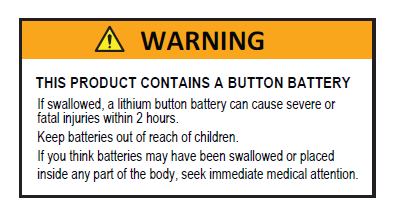
The safety and information standards for button/coin batteries include the following requirements:
- Packaging must be child-resistant for button/coin batteries of lithium chemistry of all sizes, and button/coin batteries of a chemistry other than lithium with a diameter of 16 mm or above.
- Compliance testing must demonstrate child-resistant packaging requirements have been met.
- Where multiple button/coin batteries are supplied, blister packaging must be designed to release only one battery at a time.
- Any spare button/coin batteries that are supplied with a consumer good, where the battery is not pre-installed in a secure battery compartment, must be enclosed in child-resistant packaging.




